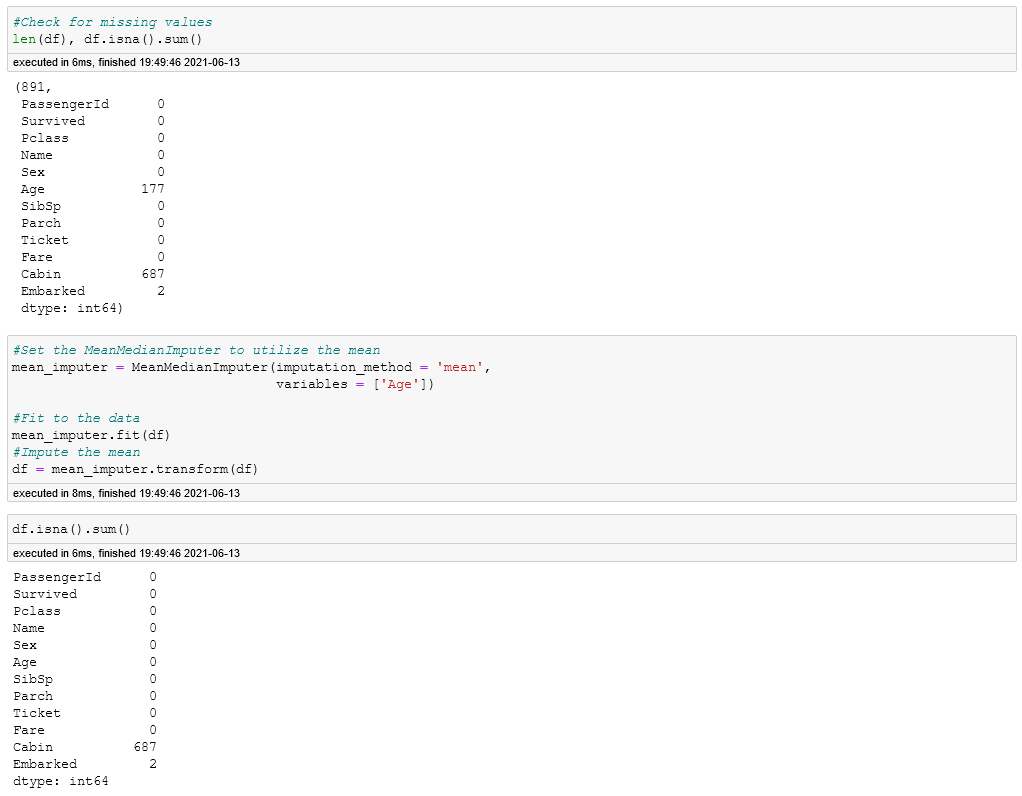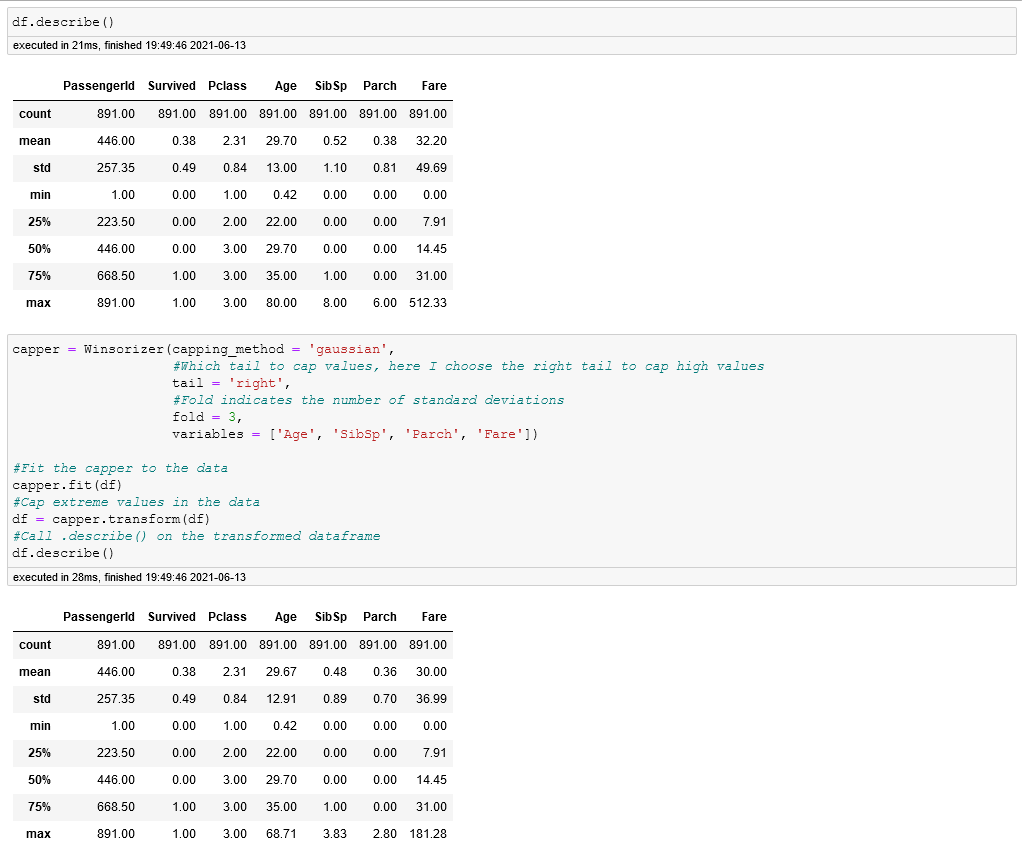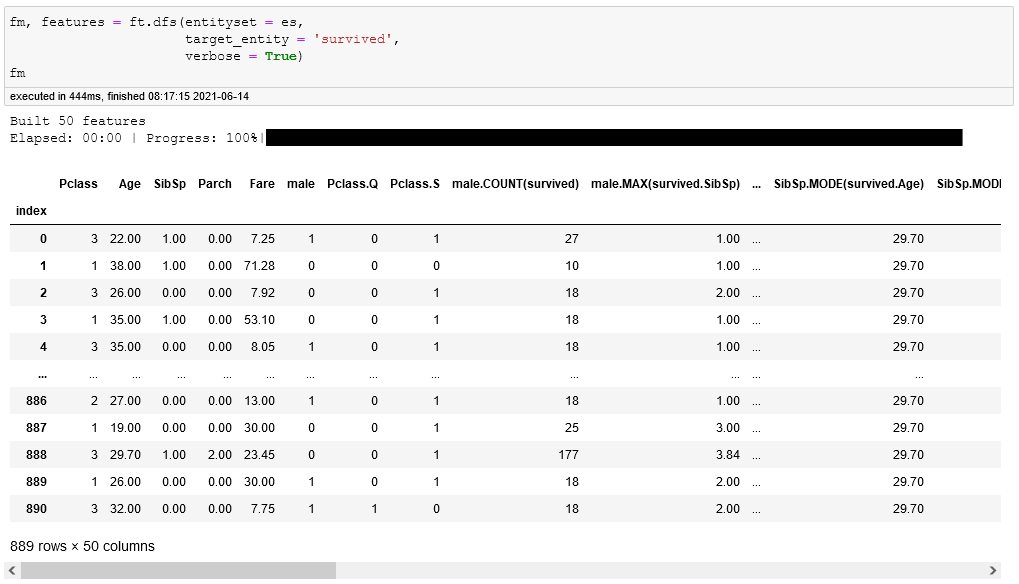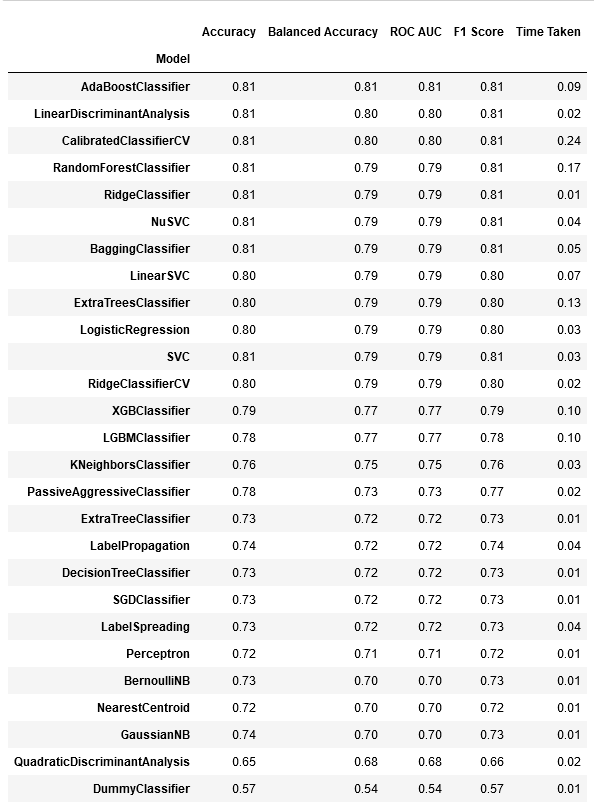LazyPredict is an excellent python library that allows the user to automatically run their data through a myriad of models. It will then output information regarding how each model performed, allowing the user to view which model might be best for their use case.
This is a great tool to save time that might otherwise be spent manually testing different models. But while exploring this tool, I began to wonder what other manual steps I could accomplish purely with python libraries. And with that thought, I dove into a test of lazier than lazypredict predictions.
- Utilized data can be found in the /data folder, retrieved from Kaggle.com
- All images can be found in the /images folder
The following libraries will be used:
Utilizing the MeanMedianImputer from Feature Engine:
- After importing the data, I utilize an automatic imputer to fill in missing values for Age.
I then utilize Feature Engine's Winsorizer to cap extreme values.
First, I take a look at the values. I then run the Winsorizer and recheck the values to view its effect.
Having done basic EDA, I'll now take a look at automated feature engineering with Feature Tools.
The first step will be to tell Feature Tools what each column datatype is. This will instruct it on how to create features from them. I'll also drop the Survived column and place it into a separate variable, as that is the value I am trying to predict.
Next, I'll make an entity called survived. Feature Tools will utilize this to engineer new features.
I also create relationship that I would like Feature Tools to explore.
Having now set the relationships, I can run Feature Tool's Deep Feature Synthesis to engineer new features.
Finally, I'll instantiate the LazyClassifier and run it using a train/test split.
After running, it creates the following table:
Utilizing Feature Tools, Feature Engine, and Lazy Predict, I was able to narrow down to utilizing Ada Boost Classifier for my model as well as being able to utilize a slew of engineered features.
There were a few items I would have liked to look further into, but I felt they broke the spirit of using the three libraries for nearly 100% of the EDA/feature engineering process. Overall, I found this a great exercise in utilizing the three libraries and feel that, with a little more tweaking and practice, would be great additions to my usuaal data analysis process.






